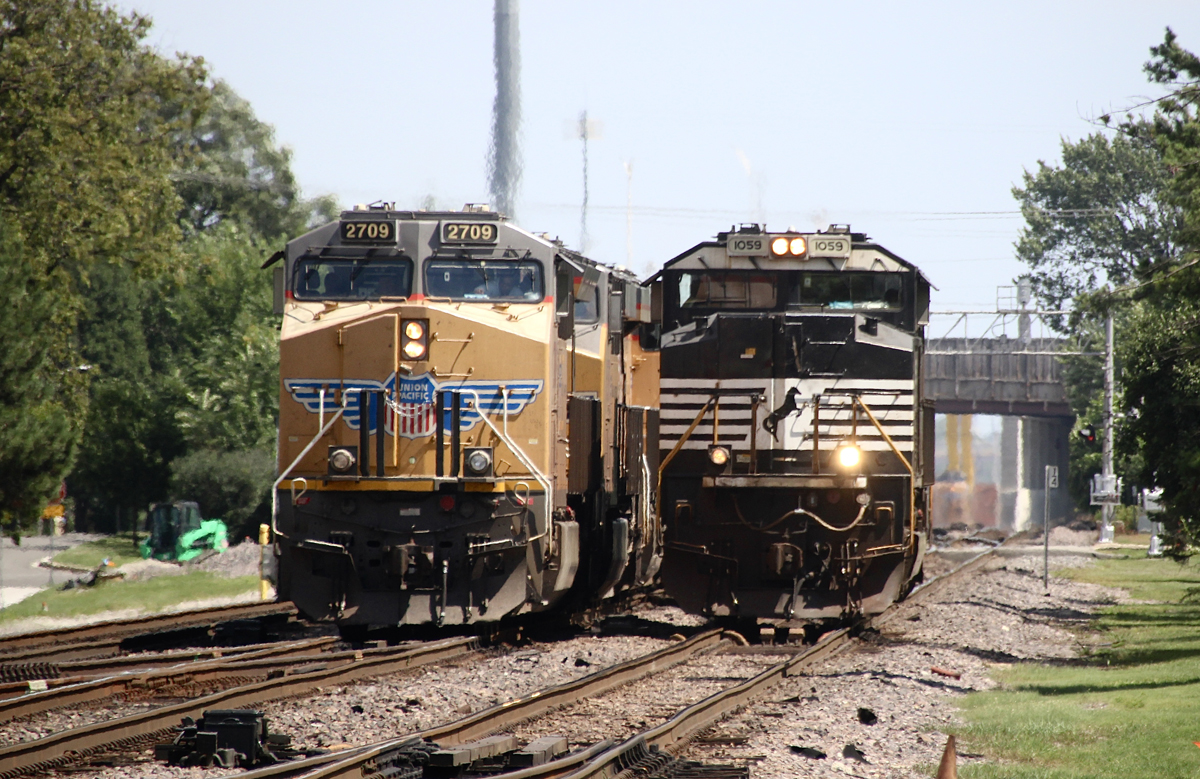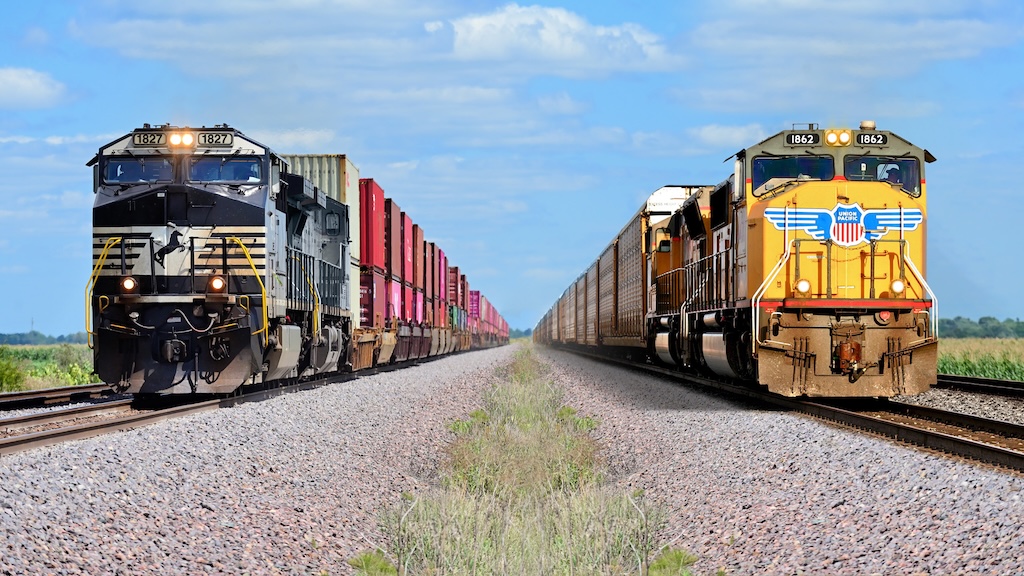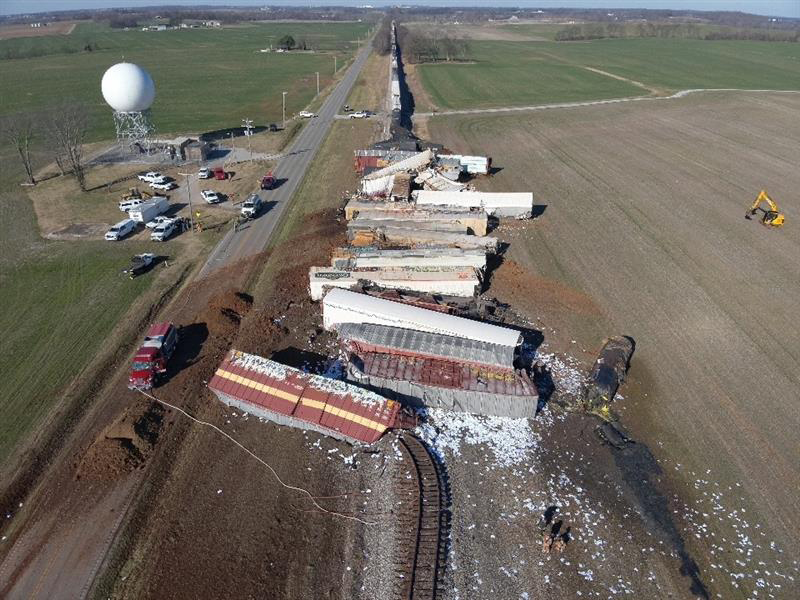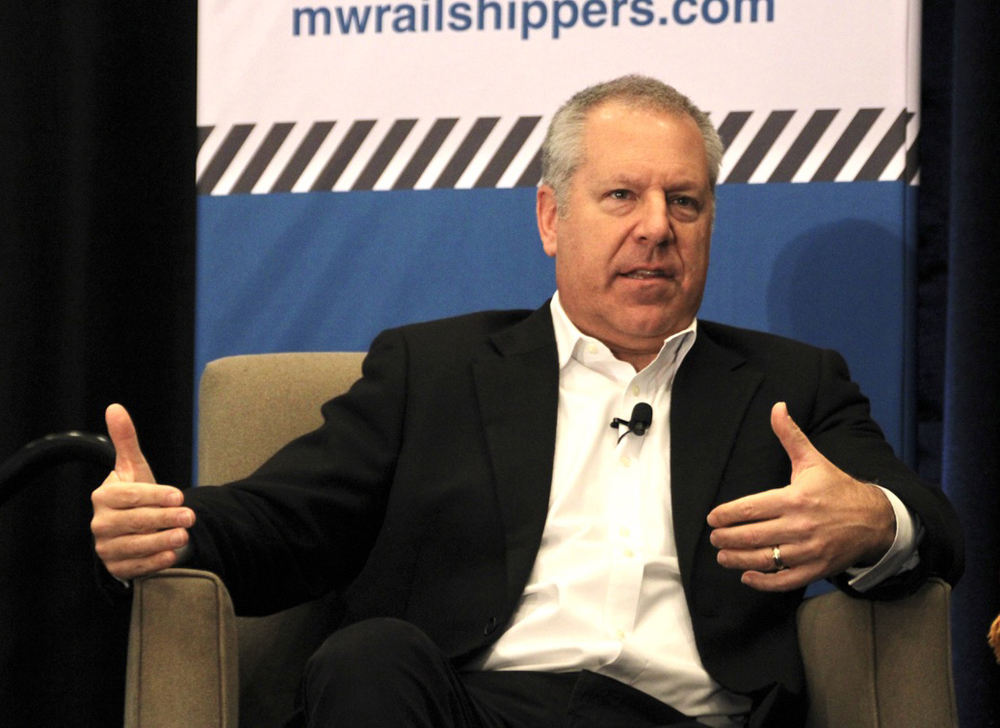The move, the first of its kind, is significant because it should allow railroads to participate in Canadian oil on a consistent, long-term, and profitable basis.
The deal with energy companies US Development Group, Gibson Energy, and ConocoPhillips Canada is expected to solve the boom-and-bust nature of conventional shipments of Canadian crude by rail.
What’s unconventional is the companies’ plan to remove diluent, which is added to raw bitumen from the Canadian oil sands before shipment. The process creates a viscous, heavy bitumen designed to move in tank cars.
The product, dubbed DRUbit, will satisfy demand for heavy Canadian crude oil on the U.S. Gulf Coast and in other markets at a cost that is economically competitive to the crude oil that is transported by pipeline, the companies say.
US Development and Gibson will build and operate a diluent recovery unit near Hardisty, Alta., where ConocoPhillips will send 50,000 barrels per day of inlet bitumen. Other producers may send an additional 50,000 barrels per day to the facility, which will be built over the next 18 to 24 months.
Initially, CP will take two unit trains per day of DRUbit to Kansas City, where they will be interchanged with KCS and hauled to a new terminal in Port Arthur, Texas.
The volumes could double if growth opportunities pan out, CP CEO Keith Creel told an investor conference on Wednesday.
CP is excited about the deal, which Creel says will provide a long-term revenue stream and move Alberta oil at much lower risk because bitumen is not considered a hazardous material.
“A safer railroad is a better railroad,” Creel says.
“Our DRU technology provides a sustainable, long-term solution for shipping Canadian crude oil to the U.S. Gulf Coast. DRUbit offers safety and environmental benefits in transportation, provides greater take-away capacity, and improved economics for all parties,” US Development CEO Dan Borgen said in a statement.
The new terminal in Port Arthur will be built, owned, and operated by US Development. It will have capability for rail unloading, barge dock loading and unloading, tank storage and blending, and will be pipeline connected to Phillips 66’s Beaumont Terminal. ConocoPhillips will re-blend the DRUbit with a variety of diluents to create blends that better meet the needs of its customers.
“People have been trying to get DRU technology right for many years. This has been an idea since 2014 at least but nobody could do it,” Graham Brisben, CEO of PLG Consulting, tells Trains News Wire. “USD is a very respected company. If this was some fly by night startup I would be full of doubts. But USD being involved tells me this is real and probably the game changer they are selling it as. It would also reduce the need to ship condensate to western Canada, which is the current source of diluent.”
Canadian railroad executives expect the traditional crude by rail window to close in two to three years after new and expanded pipelines are built to allow more Alberta oil to flow out of the province.
The bitumen is expected to start moving by the middle of 2021.
Other companies are exploring similar diluent plants and Canadian National is involved in a pilot program that would turn bitumen into inert pucks that would be shipped to ports in hoppers, much like coal.
















I live 1/4 mile from the KCS main-line in Oklahoma and have noticed the new oil trains in the last few days. I wondered what they were.
@John Rice. Agreed. Remember the City of Spokane tried suing the railroads for just being in their city. The NIMBY’s in the Gorge hate the choo-choo’s, and the enlightened folks in Seattle would have a run on Depends.
And it has to go this way (to Texas) because the west coast won’t allow it near Anacortes. A refiner setup for high sulphur sour Alaskan crude. Shell, Marathon are both there.
A CP – KCS could truly be the first North American railroad if CP ever decided to make a play for KCS and or they decided to combine. Seems like they wouldn’t have much overlap and create a very competitive network for long haul industrial and container traffic.
George Pins, in this case the diluent will not be added to the product when it is shipped in this deal. It would seem to be that CP is experimenting with ways to ship the raw crude with lesser explosion/fireball hazard than if the crude was sent with the diluent. If the crude is shipped in the proper tank cars, one such method of reducing viscosity is to heat the material up prior to loading, and warm the car up (if so equipped) through running hot water, or steam, in a series of pipes/coils built in the car body. (Something similar to how syrup is loaded/unloaded.)
Mr. Pins: I read the same as you. I will assume heavy bitumen is not as volatile as diluent added bitumen, so maybe be safer to ship by rail. But if pipeline bitumen has diluent added, is that material safe also? Essentially, pipeline shipment is safer than rail. Do I have this correct? Cheers
I’m a little fuzzy – someone help me out here, please. When it goes by pipeline, the diluent is added to make it flow. When it will go by rail, the diluent, having already been added, will be removed in Canada before shipment. Right? All wrong? 50-50? No jokes about CN cornering the hockey market, please.
Before pipelines are built, the oil shippers must sign long term contracts (take-or-pay) so the pipeline company knows they will get a return on investment. The railroads are finally catching on.
Regarding the safety of dilbit pipeline transport, the largest pipeline spill on land in the US occurred from a line carrying dilbit thru Michigan., about a million gallons. The components of the dilbit started to separate, the dilutant floated on the river, and the bitumen sank.
Interesting, first Keith Creel says he doesn’t like long-term contracts when they lose a big portion of the Teck metallurgical coal volume to CN, then CP turns right around and signs a 10-year deal to haul unit trains of Bitumen from Alberta to Texas in conjunction with KCS. So which is it Keith, either you like long term (10-year) contracts or you don’t?
What I get from the story and some previous reading. The bitumen will have diluent added at the point of production to flow through pipelines in Alberta. The diluent will be removed at the transshipment point (Hardisty) before loading into tank cars. (Diluent is just a solvent.) The bitumen doesn’t have the light chemical components that evaporate and burn or explode.
I understand that refineries are designed around the kind of crude they are intended to process. I believe that some of the refineries on the gulf coast were intended to process heavy Venezuelan crude. I speculate that blending bitumen with lighter crudes like those from fracking might allow ConocoPhillips to “create blends that better meet the needs of its customers” who need product similar to Venezuelan crude..
All: Note the last sentence in the paragraph “The new terminal at Port Arthur….”. Bitumen will be re-blended with various diluents to create blends, etc..